12 months in Venice a Gillian Knows Best guide for the seasons
What to know about the weather and what to eat when
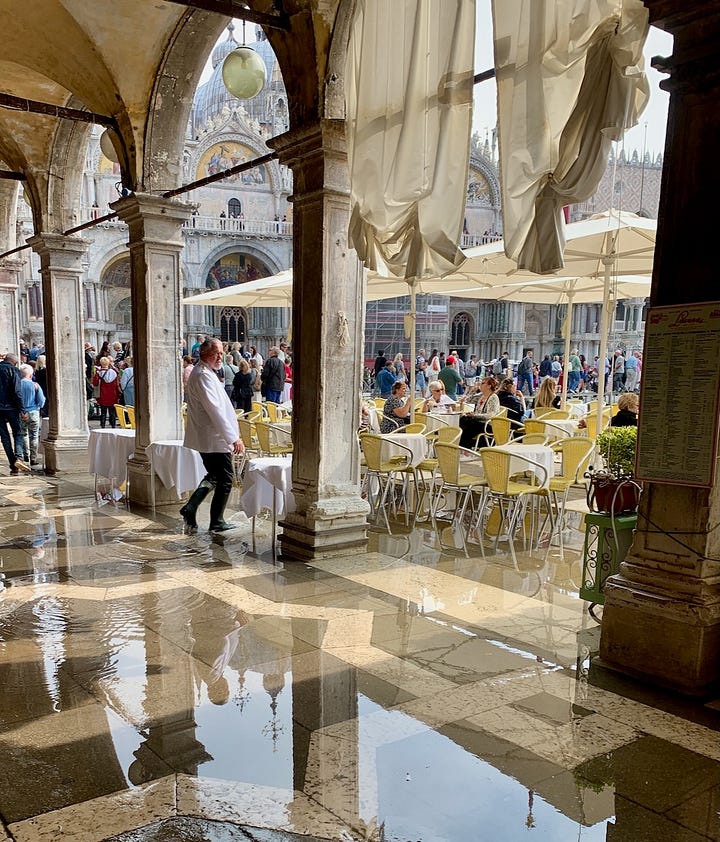
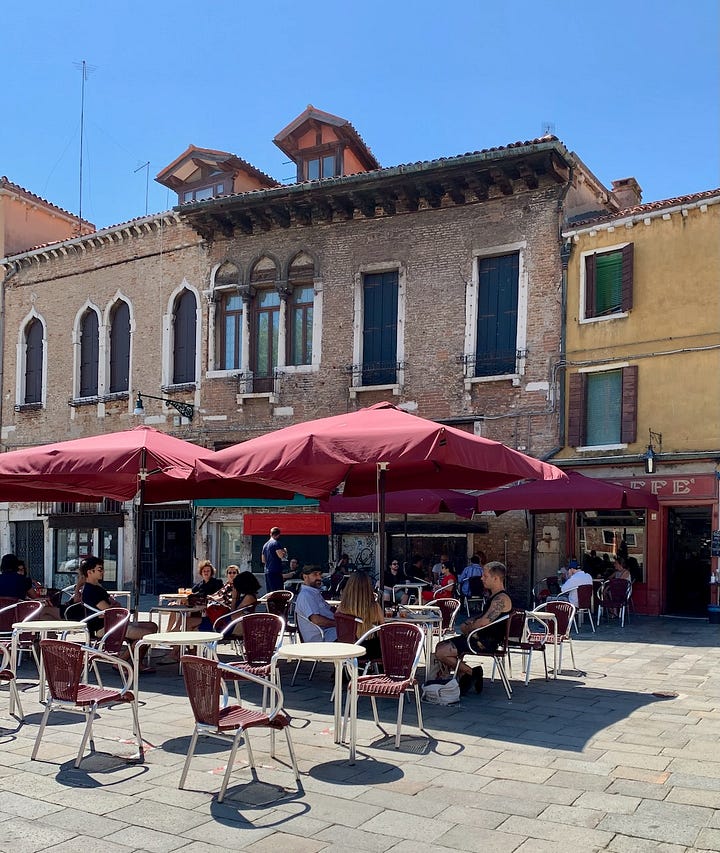
In January I told you about different events that happen during the Venetian year. To mark the Venetian new year this is a different kind of calendar.
In all of the discussions and articles and podcasts about overtourism there are two subjects that don’t get mentioned all that much. The much valorized and romanticized regionality and seasonality. Here’s the thing. They are all inexorably linked. I have sat next to tables of people in Positano ordering Barolo and Carbonara in Venice wishing they would be brave and order the more obscure to the outsider but more appropriate for the place and climate wines and dishes, like Coda di Volpe or bigoli in salsa. Now to be clear, I don’t want to dismiss personal tastes. I do want to provide context.
One of the first pieces of advice I give people who are coming to visit anywhere in Italy is to go to the market. Look at what is being sold. That is what should be on your menus. Eating locally and seasonally is not a trendy new way of life in Venice. It is just the way things are. I have to go to mainland to find cilantro and I buy tubs of miso and Gochujang and boxes of Japanese curry cubes from Rome. I also bring back guanciale amatriciano and pecorino Romano. Amatriciana is not Venetian and a plate of it is as rare as a bowl of ramen. Instead I buy pink and burgundy bunches of radicchio in the winter and look forward to the brief season in the spring when the tiny moeche, soft shell crab, are found in the lagoon. I drink Soave and Lugana, wines produced in the nearby hills. I try to live by that overworked adage, what grows together goes together.
☀️🍂let’s look at Venice through the lens of seasons❄️🌫️
Some time ago I had an idea for a guide that centered around the what to do in Rome organized by season. While I mull on that Rome project, let’s look at Venice through the lens of seasons. Venice in January is a completely different place than Venice in September. What you do and what you eat is influenced by the weather and the temperature and how empty or crowded places are. Here are some things to consider in your Venice trip planning. If you want more personalized advice, about visiting Venice or Rome I can help with that too. Send me a message to find out more about how that works.
Weather and the seasons in Venice
I use the il Meteo website and app to check the weather in Venice.I always have a scarf with me, even in summer when I mostly use it to cover my arms when I visit a church. I don’t like carrying an umbrella. I have a Marimekko rain hat and rain coat from Uniqlo. Rains also makes stylish and travel friendly rainwear.
Fog If you visit Venice from November until the end of March you are likely to have a foggy day. I love the soft quiet that envelops and obscures the city. I hear the fog horns from my bedroom window before I get an alert on my phone about a change in the vaporetto schedule. The word for fog in Italian is nebbia. Venetians call it Caigo. The word is said to come from ca me ligo, a phrase boatmen used to describe the need for a safe place to tie up when thick fog made the lagoon unnavigable. I love looking towards the Punta della Dogana when there is barely an outline of the ornate Salute church. Even better if there is a gondolier rowing along. I also enjoy watching the top of the Campanile in Piazza San Marco disappear into the sky. If foggy Venice is the best Venice then the best fog is late night fog when you have the silent narrow calle all to yourself.
Acqua Alta The surest sign that summer is over is when the passarelle appear. From 15 September until 30 April they line narrow calle and divide Piazza San Marco. While they may look like benches, some of them stacked leg side up like upside down beetles, they are not a place to sit down but instead a dry path to walk when the water rises. Acqua alta is when occasionally the water rises because of a complicated mix of moon phase and tides and wind. Rain is not really a factor. The deep canal that was dug in the 1960’s to create access for large commercial ships into the port of Marghera most certainly is a factor. Acqua alta is fact of life here. It is not a flood. It is almost never an emergency. The devastating Acqua Grande in November 2019 was an emergency. Now have Mose, the watergates that protect Venice. We have almost forgotten what it was like before Mose but occasionally the eerie alarms that warn that the water is coming are sounded and Venetians still have their boots by the door. There is an app to help you plan around it. Generally it is a minor annoyance and it doesn’t last for all that long. Aside from a few hours in Piazza San Marco, the lowest spot in the city, Mose has kept our feet (and houses and restaurants and stores) dry. If you really want to go down the aqua Alta rabbit hole start with this in depth post about how the tides work. Then move on to some Mose propaganda and lots of how Mose works information (there has been talk of opening the site to visitors) and finish with a dash of the stark realities. Sometimes in the summer during a full moon you might see some high water in Piazza San Marco.
Wind The scirocco is the warm powerful wind that can contribute to aqua alta. The Bora wind is a fierce wind that comes from the north. Sometimes it comes with a relentless rain that makes for quite a miserable time. A good book in a cozy hotel lobby or a day of museums with a big long lunch is the only solution.
Heat I lived in Niger for 6 years. On my USAID funded NGO salary I could only afford to turn on the one wall unit air conditioner for about an hour before I went to sleep. It was so hot during the day that once I burned my hands on my steering wheel. I have almost no memory of the heat making me miserable. I am sure I was miserable sometimes but that is not what I think of when I recall those years on the edge of the Sahara. The July heat in Rome made me cry. For 18 summers we lived in an apartment that did not have air-conditioning. An apartment that got so hot inside that my taper dinner candles drooped in their polished silver holders like the branches of a weeping willow. Does Venice get hot in the summer? Of course it does. It is humid too. Though I will argue, not eastern Tennessee/Washington DC humid. Do I recommend walking around Piazza San Marco or Rialto in the middle of the day in high summer? I absolutely do not. I do recommend exploring the lagoon, or spending the day on a boat, or going to the beach.
Mosquitos Venice is a city built on the water. One unfortunate byproduct of this extraordinary geography is that mosquitoes thrive here. They are at their most annoying when it is warm but I have slapped away an errant buzzing nuisance in January! I always have Autan spray and an herbal dopopuntura roll-on pen in my bag. You can find these at the pharmacy or in most grocery stores with the shampoo toothpaste.
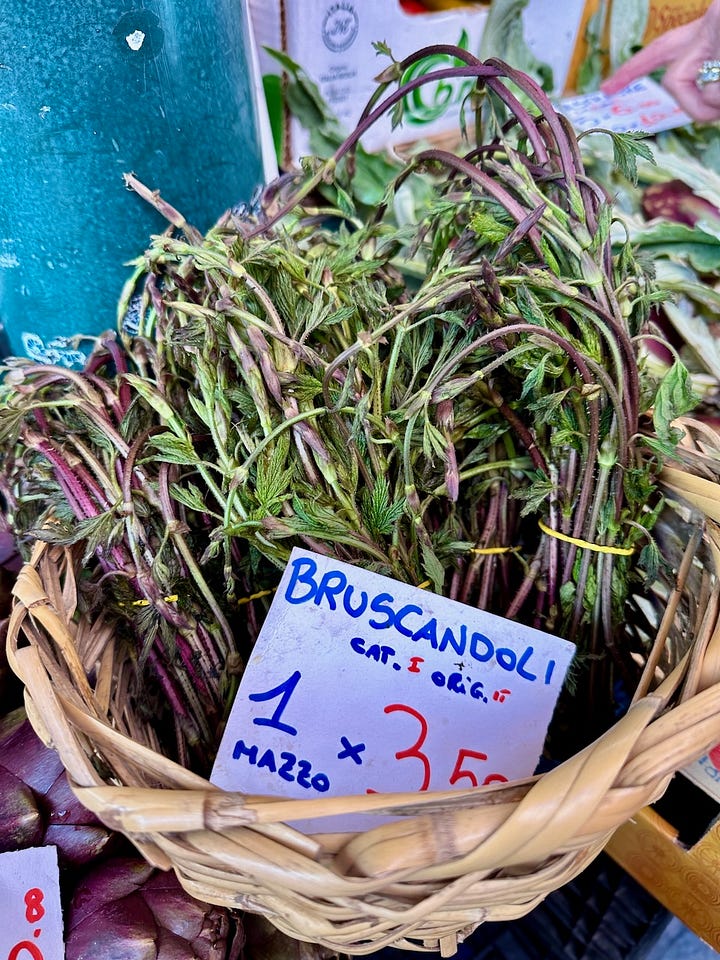
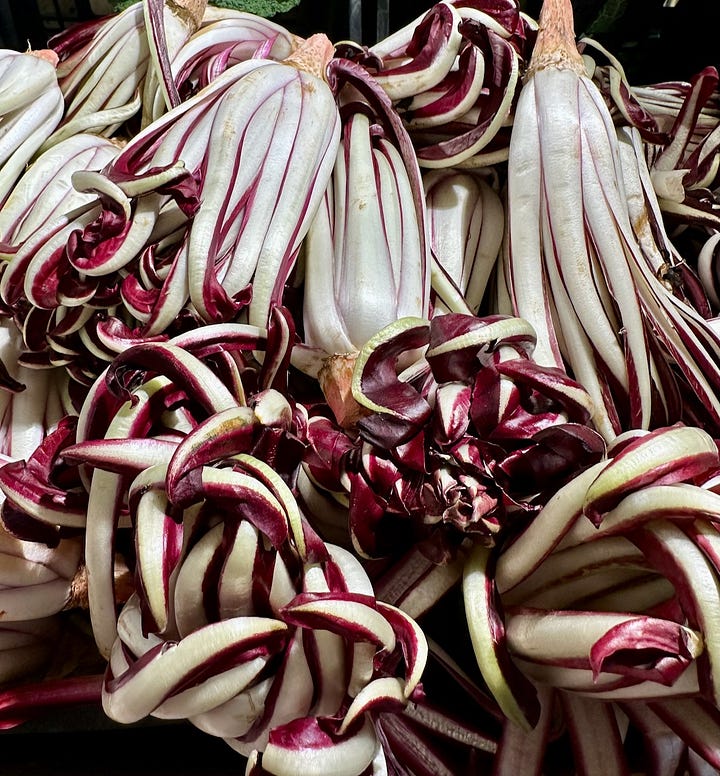
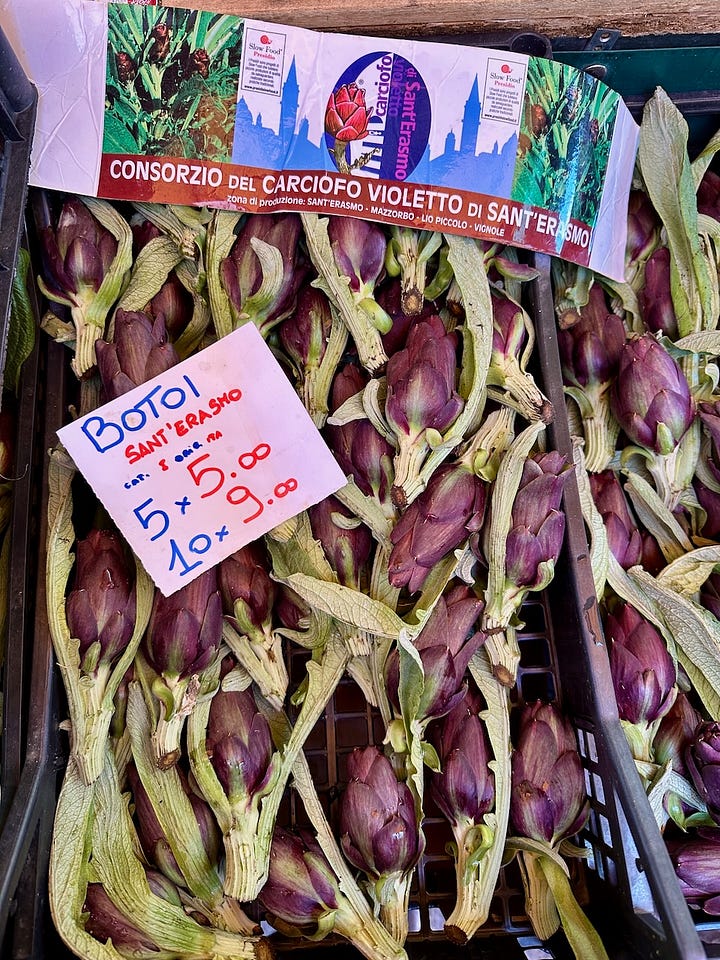
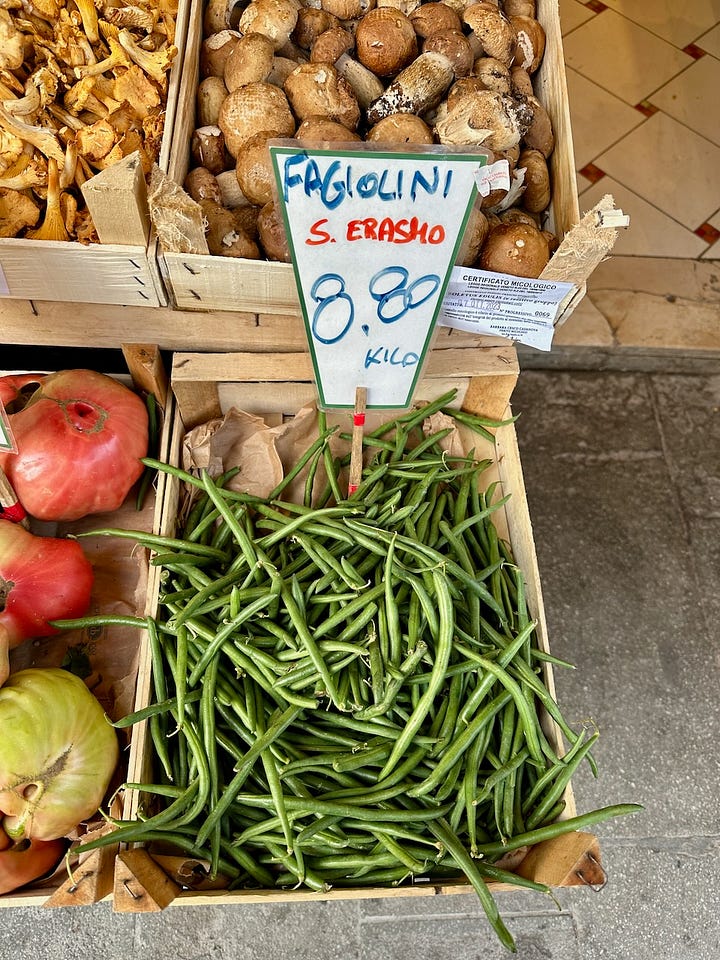
Seasonal and regional food in Venice
I was at an Ethiopian lunch party in Rome when an American friend said to me there is a reason Italians do everything at the same time. It is the best time to do it. From having coffee at 11:00am to going to the beach in August. You can get a Bellini in February at Harry’s Bar but I promise you it is more luscious in summer when the white peaches are in season. Hot from the fryer fritelle are an indulgent treat on damp foggy February days and extra delicious because you can only have them during Carnevale time.
Many Venetian holidays have special foods. We eat castradina, a smoked mutton stew for Salute and sweet fluffy focaccia Veneziana at Christmas. Bowls of tiny bovoleti (snails) are on almost every table at Redentore. If you visit in November bakery windows will be filled with horse shaped San Martino cookies decorated with candy and colored icing. I made an entire guide to Carnevale fritelle.
Romans have bucatini, Tuscans have Pappardelle and here in Venice we have Bigoli. Look for bigoli in salsa, with a sauce of onions and fresh sardines or anchovies on menus all year. My favorite restaurant dish in the winter is ragù d’anatra (duck ragu.)
The history of pasta in Venice may be debated but Venetians love of polenta is not. Both white and yellow cornmeal is used and polenta is a versatile foundation to things like fried liver (Figà àea Venessiana) or cichetti toppings. The consistency can range from soft and soupy to crisp fried rectangles.
Every aspect of life in Venice is connected to water. When it comes to food that means a lot of fish and mollusks and crustaceans. Venetian is its own language so menu items may have words you have never seen before in other regions.1
Bacalà mantecato is one of the most Venetian of Venetian dishes. In the rest of Italy Bacalà is made from dried salted cod (like the deep fried pieces you get in Rome) but in Venice it is made from air dried stockfish that comes from Norway. The dried fish is soaked in water for a few days and then whipped with olive oil. It is creamy (but there is no dairy at all! Bacalà alla vicentina is made with milk and cheese) and fishy. It is served on slices of firm polenta or bread as cichetti or as an antipasto.
Seppia al nero is made with cuttlefish (even if it is translated as squid-ink on the menu) and is served on polenta or spaghetti.
Peocio are mussels (cozze) and caparossoli and sometimes beverasse are clams (vongole)
Folpetti are tiny baby octopus, they are cooked in umido (stewed) or fried.
Risotto di Gò is made with gouzzo, a small, bony, difficult to clean, lagoon fish.
Canoce This prawn like crustacean (mantis shrimp) has so.many.names. Pannocchie/cannocchie/cicala di mare are best when it is coldest, from late fall to early spring. Look for large soft pink wiggly piles of them in the Rialto fish market.
Schie are the itty bittiest shrimp from the lagoon in the Po delta. They have a briney sweet flavor and are served on a soft bed of polenta. If you like shrimp and grits, you will love schie e polenta.
Moeche means soft. Crab molting season happens in the spring and fall. That is when you get the small delicate lagoon crab. They are breaded and fried and eaten whole. granceola spider crab Blue crab
Vegetables in Venice
Carciofo Violetto di Sant’Erasmo are small artichokes grown by a few certified producers in the lagoon. There are delicious tiny artichokes that start appearing in the market and on menus in late January. The true Carciofo Violetto di Sant’Erasmo do not come until April. The first artichokes that are harvested are castraùre, soft and delicate and most delicious sliced raw with shavings of parmesan or tossed into fresh tagliatelle. The next bud on the plant is the botoli, served deep fried or sautéed. In May there is a festival on the island of Sant’Erasmo.
Radicchio: Globes of burgundy Rosso di Chioggia are available all year long but winter is when the pink flounces of Rosa del Veneto and the speckled Castelfranco radicchio arrive. Does the price of the curled crisp tangles of Rosso di Treviso Tardivo make you gasp? This series of labor intensive steps the plant requires is why.
Look for shaggy bunches of bruscandoli, wild hops in the Rialto market in the spring or if you are lucky, go foraging with a Venetian pal.
La salicornia grows on the barene, the marshy salty tidal islands in the lagoon. Sometimes it is called asparago di mare on menus. It is crunchy with a saline bite and is usually sprinkled into pasta or vegetables or as a garnish in a cocktail.
Have I made you curious about how vegetables are grown in Venice? You can schedule a visit Oste in Orto From April to December.
A menu in lots of languages usually means a a mediocre restaurant. That is not always the case in Venice. Don’t let that one detail scare you away.






This is why you're one of the best experts (maybe the best?) writing about Italy. All you said and the emphasis on the true Italian way of life. As a born and raised Italian, I always learn something new from your posts. Thank you for the much-needed guide on traditional Venetian dishes & vegetables. Brava Gillian!!
Well I know that you’ll be making a guanciale run in Rome for amatriciana— thanks to that obstinate Venetian butcher. Always wanted to see Venice in the fog— now I know the right season!